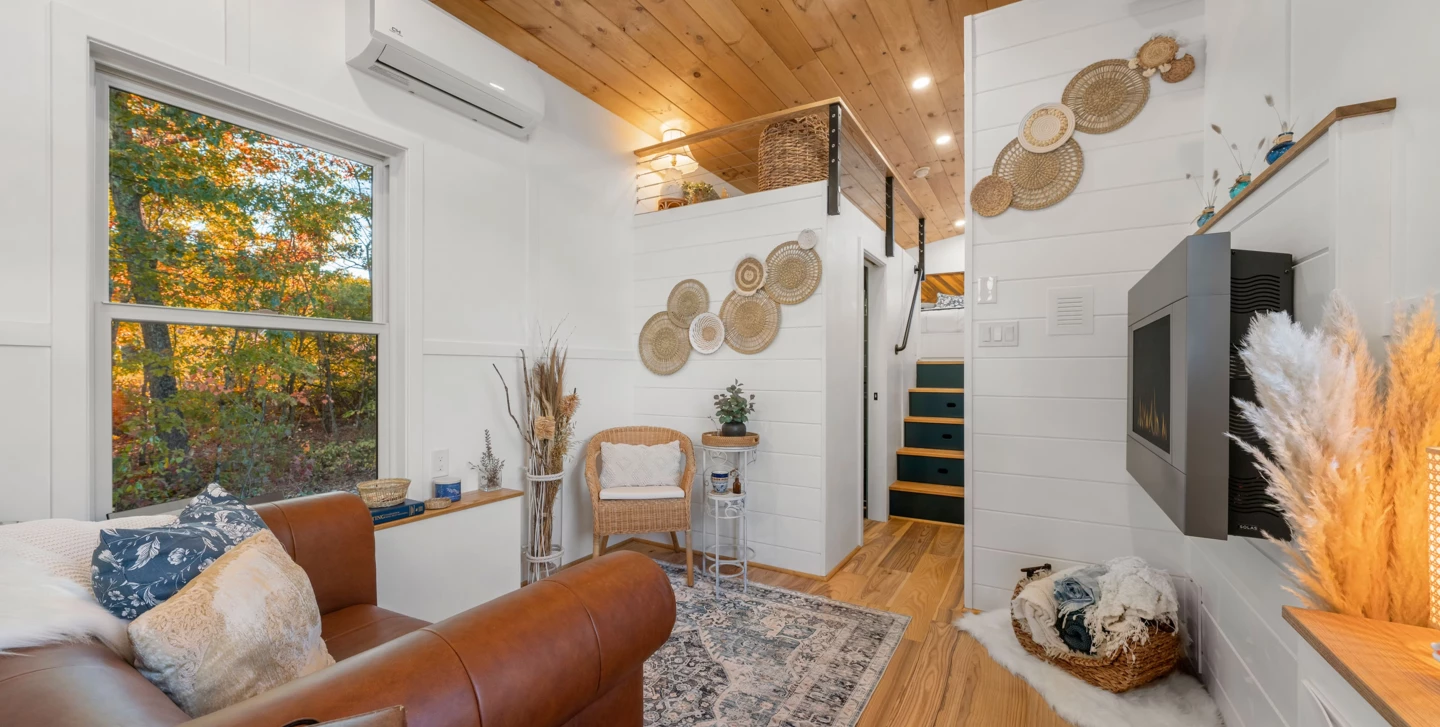Backcountry Tiny Homes’ latest model, the Beachcomber tiny house, pushes the limits of small living. Designed for one or two people, it features a remarkably roomy and storage-packed interior that’s closer to an apartment on wheels than many traditional tiny houses.
The Beachcomber is based on a triple-axle gooseneck (raised) trailer and measures 38 ft (11.5 m) in length, and an unusually wide 10 ft (3 m), putting it on the larger side for a North American tiny house. The extra width really makes a difference and allows for a more open and comfortable layout, though it does also mean the home requires a special permit to tow, so obviously this one isn’t a good choice for regular travel.
The exterior of the home is finished in a combination of metal and board and batten siding, with generous glazing.
Backcountry Tiny Homes
Its single entrance opens onto the kitchen. This has an oven and propane-powered four-burner stove, along with a sink, a fridge/freezer and lots of cabinetry (including a pantry space), along with quartz counters. Nearby, tucked into a corner, is a dining table for two.
Adjacent to the kitchen is the living room, which hosts a sofa and a coffee table. There’s also an electric fireplace, yet more storage, and space for a TV. The bathroom is on the opposite side of the home to the kitchen and has a flushing toilet, a shower, and a vanity sink.
There’s just one bedroom in the Beachcomber, which is situated in the raised part of the trailer and reached from the living area via storage-integrated steps. It has ample headroom to stand upright and some built-in storage, along with a king-sized bed. Additionally, the Beachcomber has a second loft, situated above the bathroom, which is used as a storage area.

Backcountry Tiny Homes
Like Backcountry Tiny Homes’ other models, the Beachcomber comes in three different versions. It can be purchased as a shell for US$78,650, an unfurnished model for $169,200, or fully furnished and ready to move in for $185,000. There are also lots of options available including off-grid upgrades.
Source: Backcountry Tiny Homes


